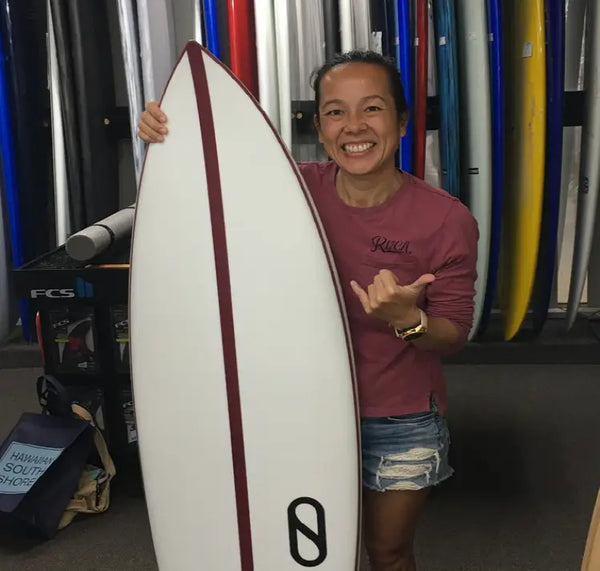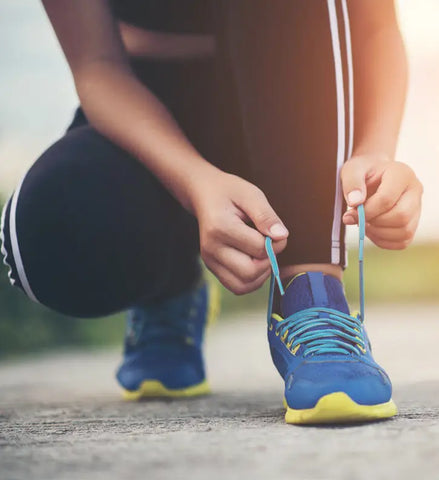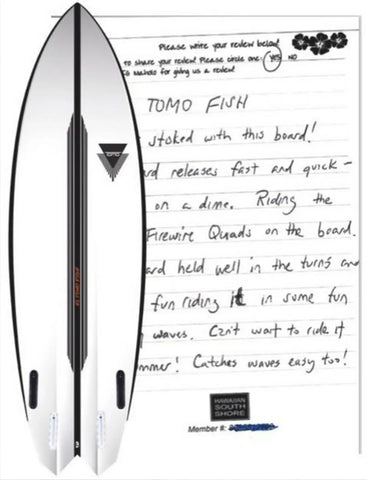Hawaiian South Shore June 2020 Newsletter
NEWSLETTER JUNE 2020

The History and Science of Surf Reporting and Forecasting on Oahu

All of those who surf and live in Hawaii have become accustomed to daily surf reports and forecasts, but many of us are unaware of the science and history that go into those reports. This information is not only interesting for us from a cultural perspective, but also useful in better understanding the ocean and swells, which in turn makes us better watermen and women.
The original surf reports were anecdotal observations from surfers and other coastal people. In 1968, a man named Larry Goddard began keeping written records of observed waves heights on the north shore of Oahu, and four years later he added the south shore to his report as well. These observations were taken at standout spots that tend to receive the most size in the region, such as Sunset Beach and Ala Moana. They used the Hawaiian scale and logged what was called the H1/10, or the average 10 percent highest waves for the day.
In 1987, Mr. Goddard moved away from Hawaii to the Mainland. But fortunately, that same year, Pat Caldwell began keeping his own written record of wave heights on Oahu. Caldwell would go onto become the preeminent name in Hawaiian surf forecasting and surf climatology, holding an enviable job (for those who geek out on surf heights) as an oceanographer with NOAA and it’s National Weather Service, specializing in surf reports (among other things) for the state of Hawaii.
When Mr. Goddard returned to Hawaii in the late 1990s, he shared his collection of observations with Pat Caldwell, effectively creating a repository of daily surf reports for Oahu dates from 1968 through to the present time. This data was the subject of a research paper confirming the validity of the numbers to within a 15% error of margin, and Caldwell eventually converted the observation records from Hawaiian scale to wave face measurements (by using the formula of Hawaiian scale x 2 equals face measurement). The combined data collected by the two men has been the subject of various research projects, and is known as the Goddard-Caldwell Database.
If you look at the data collected over the years and apply averages and means to it, you will find that the average waves during the North Shore season are 12 feet, plus or minus 8, which means that on average the waves range from 4-20 feet on the face during the winter on the North Shore. Of course there are days that lie outside of that range (including some very memorable XXL days each winter), but generally speaking the average. The Goddard-Caldwell Database also shows that more northerly swells are common in fall and spring, whereas winter swells (January through March) tend to be of a more westerly and northwesterly direction. This is due to the behavior of the Jetstream during these seasons.
The south shore of Oahu sees lower average numbers as south swells come from storms that are farther away from Hawaii, and therefore suffer from more swell decay. When averaging over the mean, median, and mode for the south shore season, which stretches from March through October, we find that the swell size averages 5.5 feet (on the face), plus or minus 2.3 feet. Thus, the average daily swell height (at Ala Moana, which tends to pick up the most swell on the south shore) ranges from 3-8 feet on the face.
The Goddard-Caldwell Database also began measuring swell on the east side in 1987, first at North Beach on Kaneohe Marine Corps Base, and then at Makapuu. The data shows a bit of variability in east coast measurements, largely due to the variety of swells that can filter into the east-facing shore (trade wind swells, north swells, etc.) and the fact that different places are shadowed from different swells. However, the data agrees that the average annual trade wind speed measured on the east side (which is the direction that the trades come from) is 16 mph. The assumed average trade wind swell height for the east side is 5 feet on the face.
So what does all of this mean for the average surfer? Well, that depends how much personal involvement you like to have in your surf forecasting. If you are content to simply let Pat Caldwell tell you how big the waves are every morning, he is happy to do so—and has been since the late 1980s. But for those who like to keep their own observations and forecasts, it is helpful to understand the seasonal averages of swell heights on the various coasts, so you always have your quiver updated and ready when new swells hit!
Dan Mann Talks Us Through the Twice Baked

Dan Mann’s Baked Potato was one of the top-selling Firewire surfboards over the past decade and has become a classic addition to the quiver for anyone who wants to grovel with confidence. Now he has released the Twice Baked, which is an updated version of the Baked Potato. Recently, Dan chatted a bit about the difference between the Twice Baked and the Baked Potato, and how to choose the right Twice Baked size for your surfing.
One of the main differences between this board and the original Baked Potato is the tail. The Baked Potato has a diamond tail, whereas the Twice Baked has a big, chopped-off, flat tail that allows for more release through turns. This makes the board flickier and more responsive through maneuvers. Dan also added a bit of vee through the tail to help maintain control in the flatter, flickier tail.
The Twice Baked is also a bit more svelte than the Baked Potato—not as chunky and clunky. The rails have also been thinned out a bit, and there is a bit more rocker in the nose, which adds an extra level of performance. In general, it is simply more performance-oriented without sacrificing the paddle speed and skatey momentum through flat sections that the Baked Potato is known for. It maintains the grovel ability of the Baked Potato but provides a little more control and performance through turns.
Generally speaking, you want to ride a Twice Baked that is two liters more than your regular shortboard. Dan likes a bit more length in his rail line, so he will sometimes ride the 5’5”, even though the 5’3” is appropriate for his volume. But because the updated shape is quite maneuverable, a few extra liters don’t matter, so you can feel free to experiment and see what works for you.
The Twice Baked uses the classic Timbertek construction, maintaining the popular aesthetic of the Baked Potato. Another reason for this construction is the life and strength it gives to the board. Dan likes to do what he calls a “ping” test, where he grabs the board by a fin and on the rail, right where you duck dive and then whacks the bottom of the board with his hand. The resonance of the ping will tell you how much flex and life there is left on the board.
The Timbertek construction maintains that life longer, and gives the Twice Baked hold and drive to help it connect turns. Flex matters in boards, but independent of the flex there is also the under-the-foot feeling to consider—the squish or rigidness of the board, which is produced by the type of skin used in construction. The Timbertek provides that firm feel, which provides for a more sensitive board. Plus, with an EPS core, paulownia skin, and epoxy bio-resin, it is a stronger, more responsive, longer-lasting board—just what you want in your daily groveler.
June Member of the Month
Q & A with Anne
When and why did you initially get into surfing?
I started surfing late in the game compared to others-- I think I was 25 or 26 years old. I discovered surfing while doing a med school rotation here in Hawaii. I remember how good and free I felt out in the ocean. I had never felt that way about anything else before. I was hooked after that.
Did you have a time period you laid off from surfing? If so, when and why did you start back up?
I had to take a break when I was pregnant. That was tough, I looked to other hobbies to fill my time. After I had my kids, I quickly got back into the water. It really helped get me back in shape. Since then, I haven’t really stopped. I guess I’m trying to make up for all that lost time. How is it that I didn’t discover surfing before my 20’s?

What is your favorite thing about surfing?
Surfing allows me to connect with other people and nature. I’ve met so many cool people and made great friends through surfing. Surfing also helps me find peace and balance. Some days, when I find myself overthinking, stressing out, or losing sleep, paddling out helps to provide clarity and allows me to reset, recharge, and have a new perspective to tackle any obstacle.
Where is your favorite place to eat after surfing? What is your favorite item on the menu?
I am such a big boba tea fan! Nothing beats a refreshing tea after surfing. Sharetea or Tastea are my favorite places. I usually order the Mango green tea with the grass jelly.
What other hobbies do you have besides surfing?
I love to sew, silk screen, indigo dye, anything crafty really!
What type of work do you do?
I’m a Pediatric hospitalist, which is a pediatrician that takes care of sick kids when they are admitted to the hospital.
Tell us about the board you recently purchased from us. What model and size is it, and how do you like its performance?
I recently bought a Sci Fi 2.0 LFT. 5’3” x 18 x 2+3/16” (22.6L). It’s a grom board lol! What can I say, I love the smaller boards. I am absolutely LOVING it! It is super fast and responsive. David recommended these FCS2 MR twin fins with a smaller trailer fin and wow, does it ever turn well. I bought the original Sci-Fi LFT prior to this- it is literally indestructible.
Do you have any additional comments?
I am so grateful to be living in Hawaii. Surfing has been the one thing that has kept me sane during this pandemic. David and Brett and the Hawaiian South Shore team are really top-notch. They are so friendly and knowledgeable and really do treat you like family. I can’t thank them enough for the joy they’ve brought me during a much needed time!
Understanding the Relationship Between Depression and Exercise
Recent research and awareness campaigns have revealed that far more people suffer from depression than many of us might think. For years, many people with depression have believed that they were alone in their struggle, but it turns out the challenge is both common and widespread. It is also quite dangerous, particularly if people attempt to deal with their depression themselves. The sad loss of some of our greatest heroes—even within the sport of surfing—is a testament to how devastating depression can be.
Fortunately, there are ways to treat depression and break the depressive spiral. Counseling, support groups, and pharmaceuticals are all common treatments for depression here in the US. But interestingly, there is another simpler and yet incredibly effective treatment for depression that is almost universally prescribed for depression—except not in the US. Although most medical experts know that exercise has a direct positive impact on not only levels of depression but also the physical causes and symptoms of it—and although doctors in other countries routinely prescribe exercise as a first-line or second-line treatment for the mental disorder—here in the US, we largely overlook the fact that simply getting out

and running, surfing, or engaging in some other form of exercise can help alleviate feelings of depression. Research has found that exercise has similar effects on the brain as antidepressant medications. It facilitates neuroplasticity (creating new neural pathways in the brain) and leads to growth in the hippocampus, which is typically undersized in people with depression. But if exercise is so helpful for people suffering from depression, why is it so underutilized by physicians in the US? There appear to be a couple of reasons. First of all, the US is, by and large, an extremely sedentary culture. Only around 20 percent of Americans get the recommended minimum amount of exercise per week (150 minutes), and the fact that we are so dependent on cars and other forms of transportation means that many of us don’t get the minimum number of steps in each day. This lack of movement holds true with our medical professionals as well—and if they aren’t exercising enough, it is unlikely that they will prescribe exercise for our maladies.
Another major factor is the fact that the US system provides incentives for physicians to prescribe pharmaceuticals to patients. We have become a drug-dependent society that tends to treat the symptoms rather than the disease, and big pharma makes billions of dollars per year on the backs of doctors who prescribe pills for just about anything—including depression. That isn’t to say that antidepressants aren’t useful and efficacious when used correctly. But in a society that is looking for a quick fix and is often unwilling to change lifestyle habits, there is a tendency to overprescribe drugs without also utilizing complementary, holistic medicine that has been proven to work for thousands of years.
The long and short of it is that depression is a very real and very dangerous ailment, and that many of us struggle with it. If you are dealing with depression, please don’t do so alone. Reach out to people who love you for support and help, and always consult with your mental health provider when dealing with the symptoms of depression. But that being said, it is nice to know that part of our mental health is also in our own hands. We can choose to live in a way that gives us the best chance of dealing with issues such as depression, and an active lifestyle full of exercise is a great way to get started.
So next time you are feeling the blues creeping in, get outside and go for a run— or better yet, paddle out for a few waves. You’ll be amazed at how much better a bit of exercise will make you feel!
Reviews
Kumu’s Review

Kumu has been riding the CJ Nelson Outlier and he’s been enjoying the speed and maneuverability of the board. It’s super fast so you don’t need to pump the board to make sections. It’s super easy to turn and whip the board around. Check him out on our Instagram TV.
Jerry’s Review

Jerry’s been with Hawaiian South Shore for a long time, testing and recommending boards. Matter a fact it’s because of him we started working with Thunderbolt.
He took out the 9’5 Parallax and gave us a review. Believe me, If he does not like a board he’ll let us know. He was blown away how unbelievable fast and easy to turn the board. Super stoked he liked it. Check out his review here.
VIP Member Review

One of our VIP Members sent us a review card back and he was stoked.
“Stoked with the board! Fast and Quick. Catches wave easy”
The El Tomo is a very different looking shape
but I have to agree, after demoing a friend. It
catches waves with ease!
Cutting-Edge Combination of Nature and Technology
When most people think of Firewire, they think of TIMBERTEK. These are the brown, wooden-decked boards that first put the company on the map. Combining lightweight EPS blanks with a laminated wooden skin and proprietary parabolic rails, these boards look good and perform great. They are strong, lightweight, and snappy, utilizing the strength of paulownia wood to supplement the strength and flex of the EPS foam and epoxy resin.

Paulownia is a fast-growing tree that produces strong, light timber, perfect for use in surfboard construction. By utilizing this wood in their construction process, Firewire is able to minimize the amount of petro-chemical products that go into the boards. The boards are still not entirely sustainable, but they certainly use less petro-chemicals than many other boards. Plus, because they are so strong, they tend to last longer, which is better for the environment.
The TIMBERTEK boards are just as impressive for their performance. The parabolic rail construction eliminates the need for a center stringer, and instead moves the boards’ flex and life to the rails, where more torque and movement occurs. The result is a hyper-sensitive and maneuverable board that is stronger while at the same time being lighter—the holy grail of surfboard technology. The fact that it’s beautiful is just icing on the cake!
MORE TO READ...
➡️Hawaiian South Shore May 2020 Newsletter
➡️Hawaiian South Shore April 2020 Newsletter
➡️Yoga for Surfers: Prasarita Padottanasana (Wide - Legged Forward Bend)
